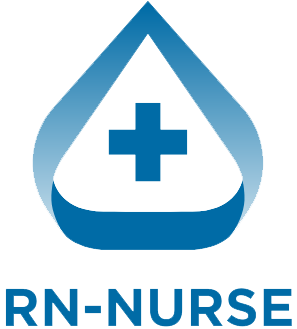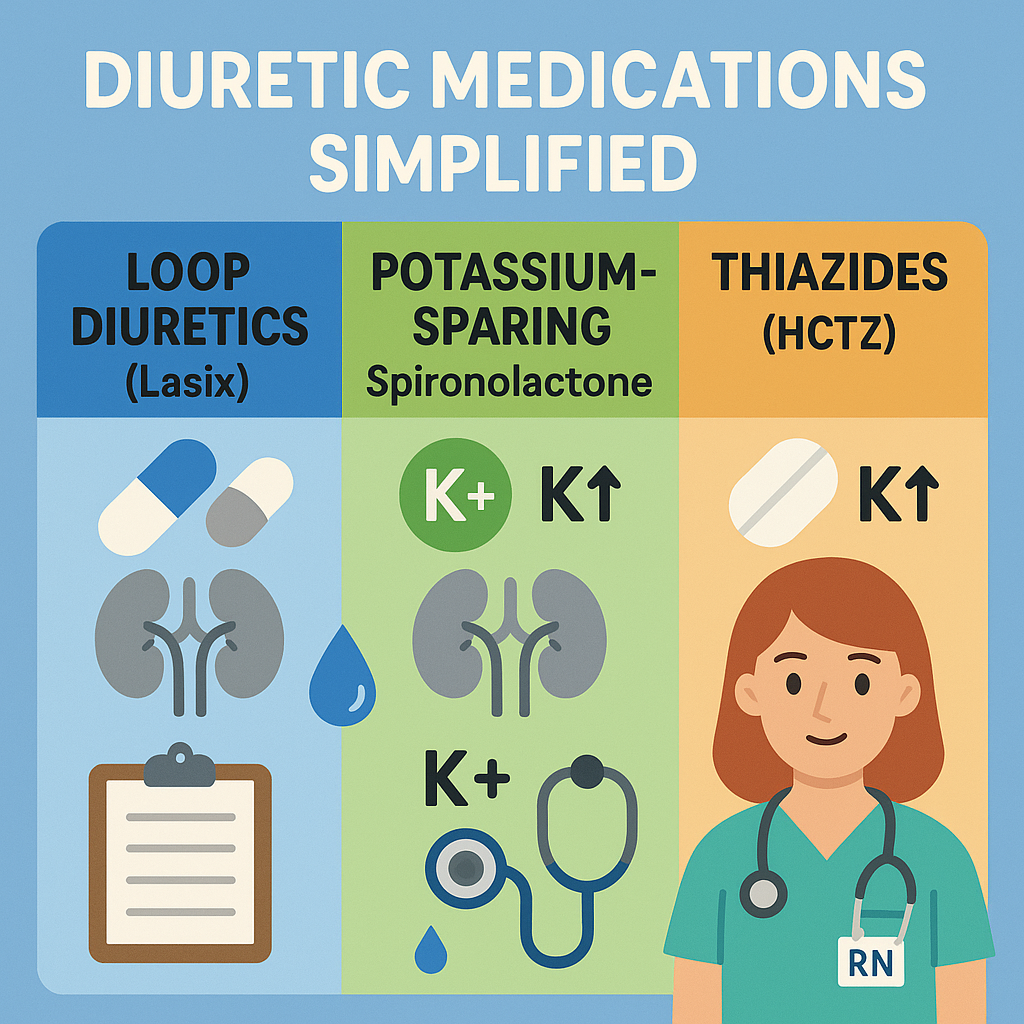Diuretics are essential medications in patient care, especially in managing fluid overload, high blood pressure, and heart failure. For every RN nurse or nursing student preparing for the NCLEX, understanding the differences between the types of diuretics is crucial.
This simplified guide helps nurses learn the core differences between Loop diuretics (Lasix), Potassium-sparing diuretics (Spironolactone), and Thiazide diuretics, with clear nursing interventions and NCLEX-focused tips.
💊 What Are Diuretics?
Diuretics are medications that help the body remove excess fluid by increasing urine production. They’re often prescribed for conditions like:
- Congestive heart failure
- Hypertension (high blood pressure)
- Edema (swelling)
- Kidney disorders
- Liver cirrhosis
These medications are frequently tested on the NCLEX, making them essential for any nursing bundle or study plan.
1️⃣ Loop Diuretics – Lasix (Furosemide)
Loop diuretics are the strongest of the three types and act on the loop of Henle in the nephron.
✅ Common Brand:
- Lasix (Furosemide)
🩺 Used For:
- Heart failure
- Pulmonary edema
- Severe hypertension
⚠️ Key Nursing Considerations:
- Monitor for hypokalemia (low potassium)
- Check blood pressure before administering
- Watch for signs of ototoxicity (ringing in ears, hearing loss) with high doses
- Encourage potassium-rich foods (bananas, oranges)
💡 NCLEX Tip:
“Lasix = Loss of K+” — always monitor electrolytes and kidney function.
2️⃣ Potassium-Sparing Diuretics – Spironolactone
These diuretics help the body get rid of water but retain potassium—a key difference.
✅ Common Brand:
- Aldactone (Spironolactone)
🩺 Used For:
- Heart failure
- Ascites (fluid in abdomen)
- Hypokalemia prevention
⚠️ Key Nursing Considerations:
- Avoid potassium supplements
- Monitor for hyperkalemia (high potassium): muscle weakness, arrhythmias
- Don’t give with ACE inhibitors or ARBs (can raise potassium too much)
💡 RN Nurse Reminder:
Spironolactone spares potassium = think “S = Spares”.
3️⃣ Thiazide Diuretics – Hydrochlorothiazide (HCTZ)
Thiazides are milder and often used for long-term blood pressure control.
✅ Common Brand:
- Hydrochlorothiazide (HCTZ)
- Chlorothiazide
🩺 Used For:
- Essential hypertension
- Mild edema
- Kidney stones (in some cases)
⚠️ Key Nursing Considerations:
- Can cause hypokalemia and hyponatremia
- Monitor blood glucose (may increase in diabetics)
- Educate on signs of low potassium: leg cramps, weakness
💡 NCLEX Alert:
Thiazides = “Think Tired and Thirsty” – fatigue and dry mouth are common side effects.
📋 Quick Comparison Chart
| Diuretic Type | Example | Potassium Effect | NCLEX Key Point |
|---|---|---|---|
| Loop Diuretic | Lasix | ↓ Lowers potassium | Check K+ before giving |
| Potassium-Sparing | Spironolactone | ↑ Increases potassium | Avoid K+ supplements |
| Thiazide | HCTZ | ↓ Lowers potassium | Mild, long-term BP control |
📚 Nursing Care Tips for Diuretics
Whether you’re a registered nurse or preparing with your nursing bundle, here’s what you should always do when administering diuretics:
- Monitor I&O (Intake & Output)
- Watch daily weights
- Assess vital signs, especially BP and HR
- Monitor labs: electrolytes, BUN, creatinine
- Educate patients about orthostatic hypotension and diet
🧠 NCLEX Practice Question Example
A nurse is caring for a patient taking furosemide. Which of the following should the nurse report to the provider?
A. Serum potassium of 3.2 mEq/L
B. Daily weight loss of 1 lb
C. BP 122/76 mmHg
D. Reports of increased urine output
✅ Correct Answer: A – Low potassium can cause arrhythmias and should be reported immediately.

